Pharmaceuticals, Personal Care Products & Water Treatment
(Updated August 2021)
Improving our daily lives, but at what cost?
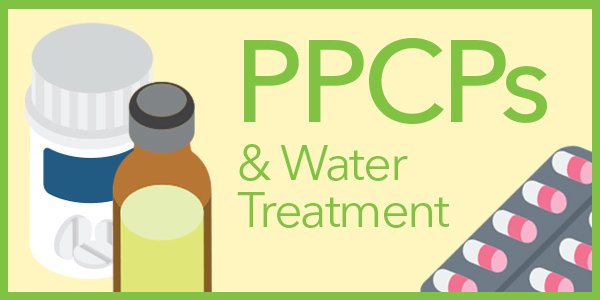
These are familiar scenarios in our daily lives.

As consumers, we regularly purchase and use ordinary household items like shampoo, detergents, fragrances, and medication. It's easy to forget these products contain chemicals and compounds that can ultimately end up in our waste streams - and eventually into our groundwater or waterways. Even in low quantities, certain product ingredients could have major consequences with continued widespread use.
Pharmaceutical and Personal Care Products
The presence of pharmaceutical and personal care products (PPCPs) in the environment has increased over the past 30-40 years, resulting from their universal, frequent, and cumulative usage.
Today, scientists are detecting PPCPs in measurable quantities in surface water, marine waters, groundwater, drinking water, and in soil and sediment. But even so, the long-term impact of continuous low-level PPCP exposure to human health, wildlife, or the environment is still relatively unknown.
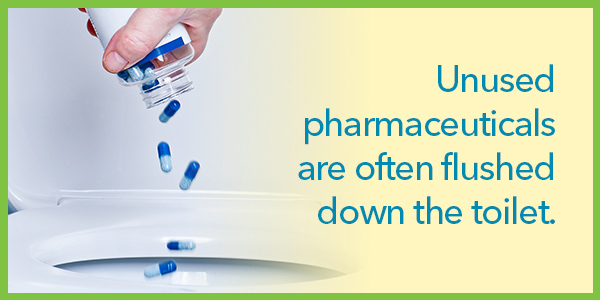
What we do understand, however, is water resource recovery facilities (WRRFs) are collection points for these compounds, and they find their way to wastewater in a number of ways:
- Detergents, soaps, and shampoos, as well as other personal care products, are regularly rinsed away with cleansing and daily hygiene activities.
- Over-the-counter or prescription medications enter the waste stream as their metabolites in human or animal waste.
- Unused pharmaceuticals are often flushed down the toilet.
PPCP Removal Efforts
WRRFs have yet to be tasked with PPCPs removal, however many of these chemicals are removed during the typical treatment process. Implementing secondary and tertiary treatment processes for biological nutrient removal and disinfection further enhances the incidental removal of micro-pollutants.
PPCPs are top of mind for water reuse projects. Facilities involved with reuse apply advanced oxidation processes (AOP) as a part of a multi-barrier treatment approach and use Total Organic Carbon (TOC) readings to monitor the efficacy of PPCP removal.
>> Download full copy of INSIGHTS Magazine
Of course, the best solution is to prevent the compounds from getting into wastewater to begin with. The Drug Enforcement Administration (DEA) and local communities are holding pharmaceutical collection events throughout the United States, with annual collection dates, to ensure the safe disposal of prescription drugs. Local events and year-round collection locations can be found by visiting the DEA's “Take Back Day” site at: https://takebackday.dea.gov/
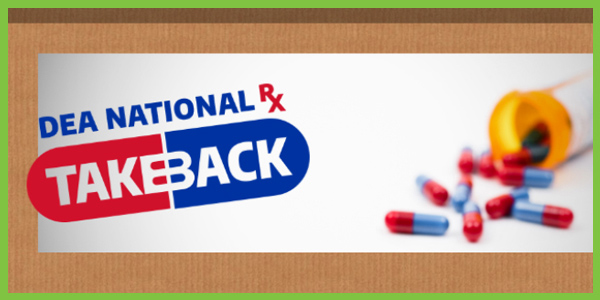
The treatment challenges PPCPs pose are essentially threefold:
- The ever-increasing volume of influent entering WRRFs carries a corresponding increase in chemicals - including PPCPs. The CDC reports that nearly 50% of Americans use at least one prescription drug per month. (CDC National Center for Health Statistics, Therapeutic Drug Use)
- There are thousands of chemicals used in the manufacturing of PPCPs, and each reacts differently in the treatment process.
- There are many different treatment processes employed to reduce nutrients, solids, and chemicals, but there’s no silver bullet to address all PPCPs.
Global Research
With the lack of a definitive stance on PPCPs from assorted government agencies, it's been up to scientists, academia, and environmental organizations around the globe to measure and analyze the impact of these substances. Given the wide array of chemicals and compounds used in PPCP development - as well as the 4,000+ medications in use today for human and veterinary medicine - no single group can research this alone.
So, it's not surprising that PPCP-related research is fractured globally and not universally applied. Research has shown PPCPs have the potential to cause hormone disruption in aquatic organisms with continued exposure to trace organic compounds. Scientists have also observed an increase in the discovery of intersex organisms (i.e. fish developing both male and female reproductive anatomy), which has led them to question the direct impact of low doses of hormones in the environment.
While it's safe to say there is growing awareness of this issue, more work needs to be done. Water professionals play a vital role in mitigating the release of PPCPs and gathering the data necessary to map out an action plan.

It Takes Baby Steps
It's been difficult to engage major stakeholders in a collective dialogue around PPCPs - the first step towards action.
But as a society, we need to have faith in our government organizations and our industry experts to do their jobs, to explore issues and concerns, and ultimately to keep us safe. In the meantime, everyone can make choices about what we purchase and how we dispose of it when we’re done. We as individuals can be careful with the medications we have in our homes, use them as directed, and safely dispose of them when finished.
Where Are They Hiding?
We know PPCP stands for Pharmaceuticals and Personal Care Products – but where are they hiding and what kind of effect do these compounds have on the environment and human health? The table below highlights some of the potential ecological effects of trace compounds found in wastewater effluent.
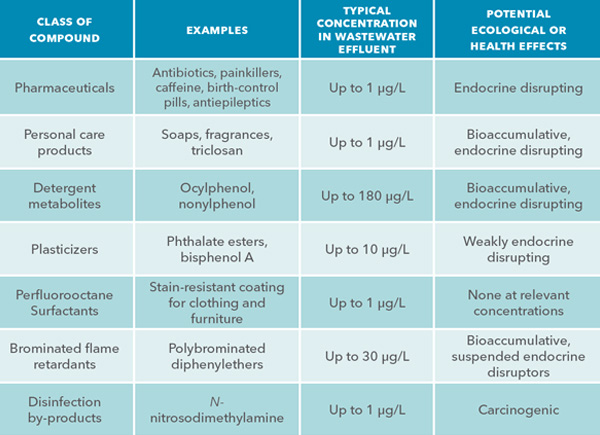
Source: Fono, Lorien, McDonald, Stephen. "Emerging Compounds: A Concern for Water and Wastewater Utilities." - Journal - American Water Works Association (AWWA).
Improved Compliance, Lower Costs
Common wastewater treatment methods have been shown to provide some level of PPCP removal. Tertiary treatment – such as microfiltration (MF), reverse osmosis (RO), ozone oxidation, and UV-oxidation - can provide further treatment for compounds that slip through.
Removing these contaminants – with the goal of finding a practical and cost-effective means to do so – is an issue faced by operators, regulators, and scientists all over the world. But the good news is that research is ongoing.
For example, the University of Johannesburg has developed a method to remove the anxiety drug Diazepam from recycled water and wastewater.
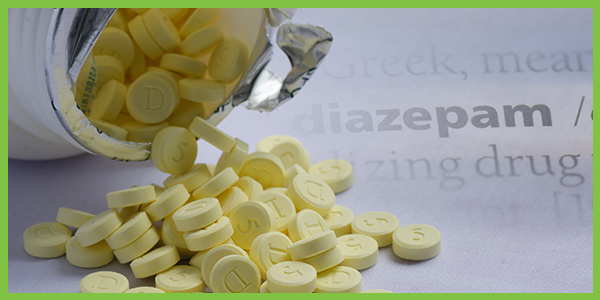
Diazepam typically bypasses usual wastewater treatment methods. “Existing processes that can remove Diazepam and other drugs at large scale from wastewater are expensive, time consuming, inefficient or all three,” lead research Vinod Kumar Gupta says. “Some also consume a lot of energy in multiple steps or use toxic and hazardous compounds unfriendly to the environment.”
The new method used nanofiber filters made of titanium dioxide. According to Professor Gupta, nanofibers are also affordable to produce. “The process to make the fibers is also simple and cost-effective,” Gupta said. “We are planning a pilot plant at the University of Johannesburg to manufacture these nanofibers.
Every aspect of the pilot plant is planned to minimize nanofiber pollution to the environment.”
There is no doubt that as more research is conducted on these emerging contaminants, more cost effective solutions will become available to remove compounds during the wastewater treatment process. The example provided here is just one of many that can certainly become a game changer for efficient removal of PPCPs.
Source: "New Low Cost Method Removes Widely- Used Anxiety Drug from Wastewater." Water & Wastes Digest (Blog).
Additional Information & Resources
U.S. Environmental Protection Agency: epa.gov/wqc
bit.ly/EPA_PPCPs
The Centers for Disease Control: bit.ly/CDC_Pill_Disposal
If you'd like to have your research or study published in one of our next issues of INSIGHTS magazine, please send us an email and we'll discuss the possibility! Send email to info@ysi.com and Brandon or Patrick will reach out to you!